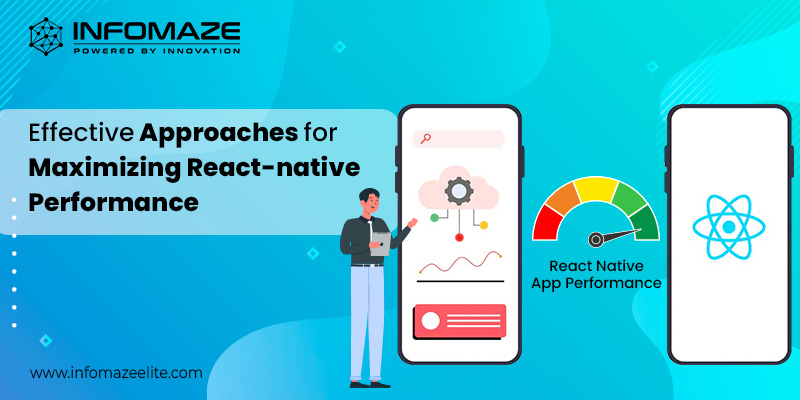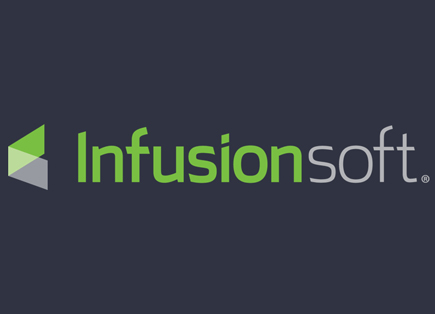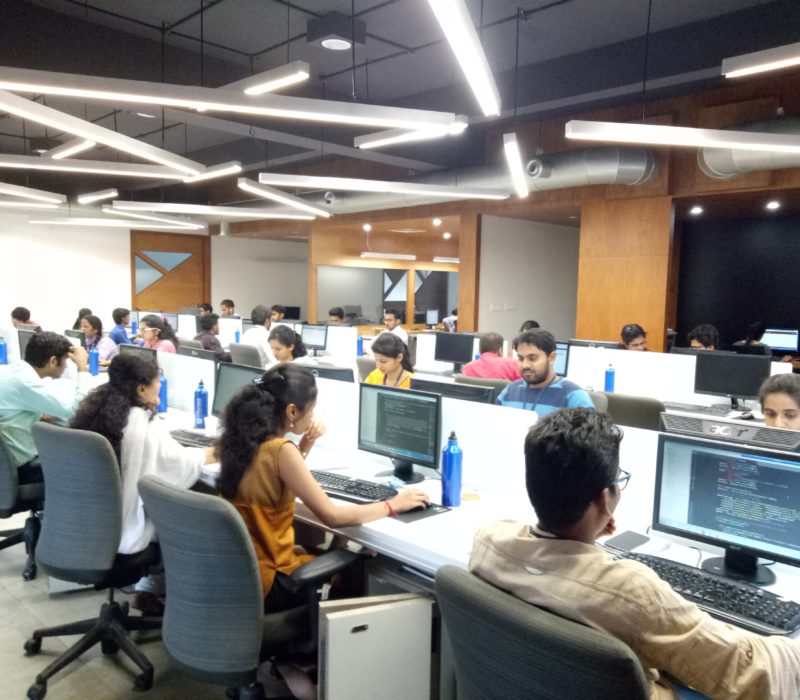Optimizing Performance in React Native Apps: Best Practices
Delivering a dynamic and seamless user experience in the ever-evolving environment of mobile application development requires great performance. The popular cross-platform framework React Native offers developers the tools they need to create effective and fast apps. Our react native app developers can unlock the full potential of React Native, creating applications that are not only visually appealing but also responsive and efficient in their execution.
So let’s explore the guide of best practices for speed optimization, from utilizing cutting-edge tools to using advanced techniques like code splitting and reactive rendering.
What is React Native App Development?
React native application development refers to the process of creating mobile applications using the React native framework. It is an open-source framework developed by Facebook that allows developers to build cross-platform mobile applications using JavaScript and React.
By integrating native components, React Native allows developers to give their apps a native look and feel. Also, it supports hot-reloading, which streamlines development by allowing developers to see their changes immediately. As it can create mobile apps with excellent performance while requiring less time and effort to develop, React Native has become increasingly popular.
How to Monitor React-Native Performance?
Monitoring the performance of React native app development is very important for delivering a seamless user experience.
React DevTools Profiler :
To find performance bottlenecks and figure out the component render times, use the React DevTools Profiler.
Testing the Performance :
Infomaze offers end-to-end solutions, from painstaking evaluations to flawless implementation, guaranteeing little disturbance and favorable results.
Flipper :
Flipper can be used to monitor component hierarchies, analyze network queries, and evaluate the overall performance of an application.
Chrome DevTools :
Use Chrome DevTools to debug and profile your React Native application for performance tracking, memory profiling, and network analysis.
Timeline Profiling :
Use timeline profiling in debugging tools to analyze the execution time of various tasks during app operation.
Network Monitoring :
To ensure effective memory management, identify and resolve memory leaks using memory profiling tools.
Effective Approaches for Maximizing React-native Performance
Here are some best practices that will help you to achieve better performance.
Use the Latest React Native Version
It is crucial to use the latest released version of React Native for the best security and performance. In order to ensure compatibility with the most recent features, tools, and libraries available in the React Native ecosystem, newer updates often include enhancements, bug fixes, and optimizations that improve the development experience.
Enable Hermes
Using a lightweight JavaScript engine, Hermes increases app speed when enabled in React Native. It speeds up execution overall, saves on memory usage, and enhances startup time. Hermes boosts the performance of JavaScript execution in React Native applications, making the user experience faster and more responsive.
Code Splitting
Code splitting is dividing the codebase of a React Native application into more manageable, smaller components. Performance is enhanced and initial load times are decreased with this optimization strategy, which loads only the modules that must be loaded when necessary. It improves the user experience by delivering code rapidly, making it especially useful in situations involving complicated or large applications.

Virtualized Lists
Virtualized lists that solely show the elements that are presently visible on the screen, like FlatList or SectionList in React Native, promptly render large data sets. Virtualization reduces memory utilization and improves efficiency, allowing a more seamless user experience, especially when working with large lists or data sets.
Optimize Images
Compressing and resizing images in React Native results in file sizes that are smaller. This reduces the usage of memory and speeds up the time it takes for images to load, improving app performance. Effective picture compression can be achieved using tools like ImageOptim or TinyPNG, ensuring faster overall app performance and a more seamless user experience.
Bundle Size Optimization
React Native bundle size optimization is reducing the size of the JavaScript bundle your application downloads. To find ways to eliminate large dependencies, delete unnecessary code, analyze dependencies, and use tools like react-native-bundle-analyzer. By reducing initial load times, ensuring a quicker launch, and enhancing the general effectiveness of your React Native application, this technique improves app performance.
Why Hire React-Native App Developers from Infomaze?
- Our React native app developers have expert knowledge in React Native, a popular framework for developing cross-platform mobile applications.
- In order to be your trusted company, we have a track record of successful completion of React Native projects, make sure to check our portfolio and client testimonials.
- Our experienced developers can offer solutions that are specifically designed to match your unique company needs, ensuring a distinctive and functional react native mobile development application.
- Hiring from Infomaze could offer you access to a worker who places great importance on prompt delivery, assisting you in meeting project deadlines.
In conclusion, React Native mobile development tuning is crucial for a flawless user experience. Faster load speeds and more seamless interactions will be achieved when best practices are followed, such as using the latest version, turning on Hermes, separating code, and optimizing images. Ensuring React Native software adheres to high-performance standards requires regular testing, profiling, and monitoring.
Categories
- AI/ML (6)
- Application Migration (8)
- BI (7)
- Case Study (28)
- CRM (8)
- Dot Net (8)
- Informational Blog (71)
- IT Help Desk (8)
- Mern Stack (1)
- Microsoft 365 (2)
- Mobile Application (9)
- Offshore Development (10)
- Outsourcing Services (1)
- PHP (11)
- PowerBI (7)
- QuickBooks (6)
- ReactJS (4)
- SEO (14)
- SharePoint (3)
- Web Application (10)
- Xero (1)
- Zoho (15)
- Zoho Case Study (36)




Disclaimer: All rights belong to the owner. No Copyright or Trademark Infringement Intended.





